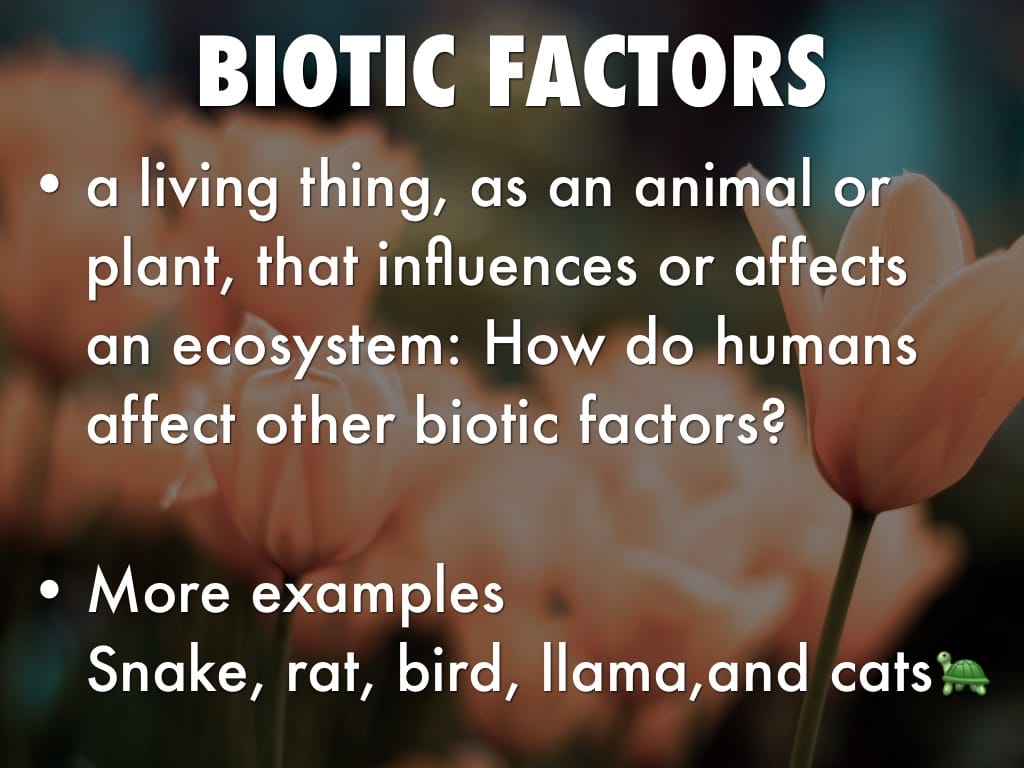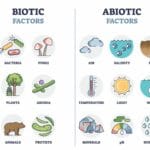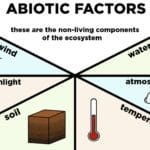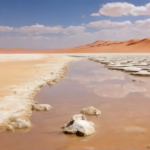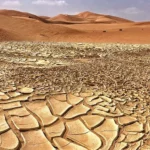Dominate Abiotic Factor’s Threats: Learn to craft and deploy powerful Disc and Laser Turrets for impregnable base defense.
Understanding Turret Types
Let’s break down the different types of turrets you’ll encounter in Abiotic Factor, providing you with the knowledge to master your defenses.
1. Disc Turrets: Your Customizable Defenders
- Craftable Security: Disc Turrets are your go-to for personalized base defense. You can craft these yourself and strategically position them to fortify your base.
- Short-Range Power: While their range may be limited, Disc Turrets pack a punch against enemies that get too close, making them excellent for close-quarters defense.
- Power Dependency: Remember, these turrets require a continuous power supply. Ensuring they are connected to your base’s power grid is critical for maintaining their functionality.
2. Laser Turrets: Automated Guardians
- Pre-Built Firepower: Found guarding key locations like the Cascade Laboratories, Laser Turrets boast impressive firepower thanks to their high-energy laser beams. Unlike Disc Turrets, you won’t be crafting these; you’ll need to strategize around them.
- Precision Strikes: LASER stands for “Light Amplification by Stimulated Emission of Radiation,” meaning they fire concentrated beams of light energy with deadly precision.
Unveiling Turret Locations
Knowing where to expect automated defenses is crucial for navigating Abiotic Factor’s challenges.
- Crafted Turrets (Disc Turrets): You have the flexibility to deploy these wherever you have a power source, allowing for strategic base fortification.
- Automated Turrets (Laser Turrets):
- Cascade Laboratories: Heavily guarding Cell Block Helmholtz, these turrets prevent any zombie outbreaks from the containment cells located on the third floor.
- Adjustment Wing: Protecting a valuable laser lab, these turrets demand careful planning to bypass. Disabling them may be necessary to progress.
- Live-Firing Turret Section: Reachable by constructing a bridge with three wooden boards, this area likely houses additional laser turrets.
Decoding Turret Mechanics
While turrets may appear intricate, their functionality is straightforward:
- Auto-Targeting: Both Disc and Laser Turrets are designed to automatically engage any hostiles within their range. Once set up, you can rely on them to handle threats, freeing you to focus on other tasks.
- Disabling Automated Turrets: To progress through certain areas, you’ll need to disable automated turrets. Keep an eye out for buttons or switches in their vicinity—activating these will likely temporarily deactivate the turrets, creating a window of opportunity.
Strategic Advantages: Gaining the Upper Hand
Understanding how to effectively utilize turrets can significantly impact your combat and defense strategies:
- Unbreakable Defenses: Turrets act as the first line of defense for your base, holding back enemy waves and buying you valuable time to react.
- Overcoming Obstacles: Strategically placed automated turrets often guard critical pathways, acting as challenging obstacles. Learning to disable or maneuver around them is essential for advancing through the game.
- Shifting the Combat Tide: When facing formidable foes like the Tarasque, turrets can be invaluable allies. Their sustained damage output can weaken even the toughest enemies, providing you with a significant advantage.
Unlocking Advanced Tactics
While this guide covers the basics, the world of Abiotic Factor turrets offers deeper strategic possibilities.
- Detailed Turret Stats: Explore the game’s mechanics to uncover detailed information on turret damage, range, fire rate, and power consumption. This knowledge will allow you to optimize their placement and usage.
- Crafting Variations: Experiment with crafting recipes for turrets. Are there alternative components or rare resources like Tarasque Ichor that could enhance their performance?
- Stealth and Turrets: Can stealth be used to bypass or disable turrets? Researching this interaction may reveal unique strategies for navigating guarded areas.
Community Collaboration
The Abiotic Factor community is a valuable resource for uncovering hidden tactics. Share your discoveries, learn from others, and collectively master these powerful tools. By combining knowledge and experimentation, you can push the boundaries of turret usage and dominate your opponents.
Turn the Tables: Master Abiotic Factor’s security systems and bend powerful turrets to your will.
What are some abiotic factors that affect sea otters?
Sea otters share a delicate dance with their environment. While we often focus on the living things they interact with, it’s the non-living, or abiotic, factors that set the stage for their survival.
Ocean acidification is a significant concern. The ocean acts like a sponge, absorbing carbon dioxide from the atmosphere. While this might seem beneficial, it leads to increased acidity, which spells trouble for sea otters. Their main food sources—creatures like crabs, clams, and mussels—rely on strong shells for protection. Unfortunately, ocean acidification weakens these shells, making it harder for sea otters to find a meal.
Storms, especially powerful hurricanes and cyclones, pose another threat. These events can rip through kelp forests, which are like underwater havens for sea otters, providing both food and shelter. Imagine a storm devastating your neighborhood—that’s the scale of impact we’re talking about. Without healthy kelp forests, sea otters are left vulnerable and with limited resources.
Human activities, such as oil spills, are another danger. Oil spills are devastating for countless marine species, but they are particularly harmful to sea otters. Oil coats their fur, which is vital for insulation against cold ocean waters. This coating disrupts their ability to stay warm, leaving them vulnerable to hypothermia. Ingesting even a small amount of oil can lead to serious health problems.
Water temperature and salinity (the amount of salt in the water) also play crucial roles. Just as we have preferred temperatures, different prey species thrive in specific temperature and salinity ranges. If these factors change, it disrupts the delicate balance of the food web, impacting sea otter populations.
While we’ve gained a better understanding of how these abiotic factors affect sea otters, there’s still much to learn. Ongoing research continues to reveal the complexities of their relationship with the non-living world and guides conservation efforts to protect these crucial creatures.
What are the 4 Main Abiotic Factors?
Living organisms rely on a complex interplay of factors for their survival. While we often focus on interactions between living things, the non-living components, known as abiotic factors, are equally crucial. These factors shape the environment and determine which organisms can thrive where. Let’s explore four of the most influential abiotic factors.
1. Water: The Foundation of Life
Water is essential for all life as we know it. But its importance extends beyond simply quenching thirst. Water acts as a solvent, dissolving vital nutrients and transporting them throughout the environment. It also provides a habitat for a vast array of aquatic organisms, from microscopic bacteria to massive whales.
The availability of water varies greatly across the globe. Some regions enjoy abundant rainfall, while others face persistent drought. This variation significantly impacts the types of plants and animals that can survive in a given area. Generally, more water leads to greater biodiversity.
2. Sunlight: The Energy Source
Sunlight is the primary energy source for most ecosystems. Plants, the foundation of many food chains, rely on sunlight for photosynthesis. This process converts light energy into chemical energy, which plants use to grow and reproduce.
Sunlight also dictates the rhythm of life. The length of daylight hours, or photoperiod, influences critical events such as plant flowering, animal migration, and hibernation. The amount of light available in an ecosystem affects animal behavior and competition among plants for access to sunlight.
3. Temperature: Setting the Pace
Temperature acts as a regulator for biological processes. As temperatures rise, chemical reactions generally speed up, leading to increased metabolic rates in organisms. This means organisms may grow and reproduce more rapidly in warmer conditions. However, extreme temperatures, whether scorching heat or freezing cold, can be lethal.
Organisms have evolved various adaptations to cope with temperature extremes, such as thick fur coats for insulation in cold climates and behaviors designed to dissipate heat in deserts.
4. Soil: The Anchor of Life
Soil, often overlooked, is the literal foundation for a significant portion of life on land. It’s a complex mixture of minerals, organic matter, air, and water, providing essential nutrients and anchorage for plants. However, soil composition varies greatly.
Factors like texture, pH, and nutrient content influence which plant species can thrive in a particular soil type. This, in turn, impacts the entire food web aboveground. Healthy soil also teems with decomposers—bacteria, fungi, and other organisms that break down dead organic matter, returning nutrients to the ecosystem.
While these four abiotic factors are fundamental, it’s essential to remember that ecosystems are incredibly intricate. These factors don’t act in isolation but interact constantly with each other and with living organisms. Understanding this complex interplay is key to unraveling the mysteries of the natural world and predicting how ecosystems might respond to change.
What are the 8 Abiotic Factors?
Living organisms are entirely dependent on their surroundings for survival. We’ve already discussed some key abiotic (non-living) factors, but let’s broaden our understanding to encompass eight crucial elements. Think of them as the stage, backdrop, and special effects of an epic play where plants and animals are the main actors.
- Sunlight: This radiant energy from the sun is the primary driver of life. Plants need sunlight for photosynthesis, converting light energy into chemical energy, which then fuels the entire food web.
- Water: From the smallest seed to the largest whale, water is essential for all living things. It acts as a solvent, a transport medium, and a vital component of cells and bodily fluids.
- Temperature: Like Goldilocks and the three bears, different organisms have different temperature preferences. Temperature influences metabolic rates, enzyme activity, and ultimately, survival.
- Soil: This often-overlooked factor is crucial for terrestrial life. Soil provides a substrate for plants to grow, offering essential nutrients and anchorage.
- Wind: While invisible, wind plays a crucial role in seed dispersal, shaping landscapes, and influencing weather patterns.
- Salinity: In aquatic environments, salinity (the amount of dissolved salts) is a key factor. Organisms living in oceans are adapted to specific salinity ranges.
- Atmosphere: The blanket of gases surrounding our planet provides the air we breathe and protection from harmful radiation.
- pH: A measure of acidity or alkalinity, pH influences the chemical reactions within an environment, affecting plant growth and the survival of aquatic organisms.
These abiotic factors are interconnected in complex ways. For example:
- Sunlight and Temperature: Increased sunlight generally leads to higher temperatures, which can impact water evaporation rates from soil.
- Wind and Salinity: Wind can carry salty air inland, affecting plant growth in coastal areas.
Scientists are continually working to unravel the complex relationships between these abiotic factors and their influence on ecosystems. Understanding these interactions is crucial for predicting how environmental changes might impact the living world. Human activities can significantly alter abiotic factors, highlighting the importance of responsible environmental stewardship.
